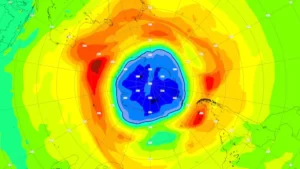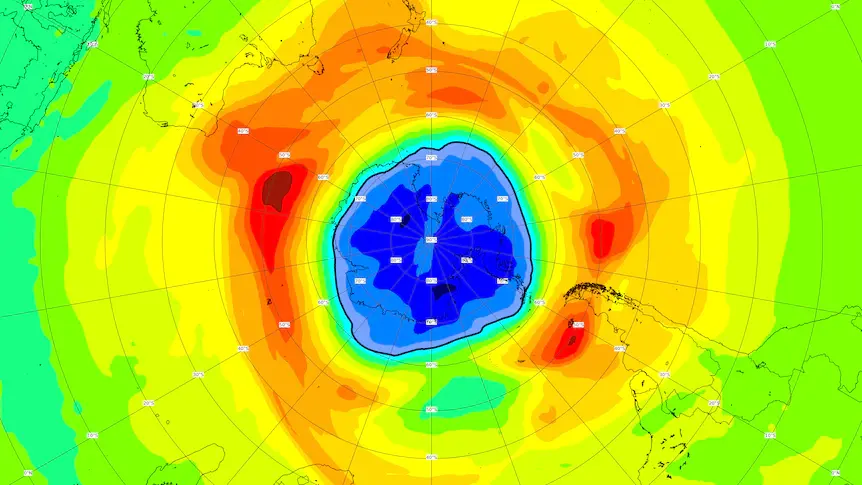 September 16 is International Day for Preservation of the Ozone Layer. The ozone layer, a fragile shield of gas, protects the Earth from the harmful portion of the rays of the sun, thus helping preserve life on the planet. The ozone layer hole has grown considerably in the past week after an average start. This year, in the space of one week, the Ozone Layer has grown larger than the Antarctic.
September 16 is International Day for Preservation of the Ozone Layer. The ozone layer, a fragile shield of gas, protects the Earth from the harmful portion of the rays of the sun, thus helping preserve life on the planet. The ozone layer hole has grown considerably in the past week after an average start. This year, in the space of one week, the Ozone Layer has grown larger than the Antarctic.
The phaseout of controlled uses of ozone depleting substances and the related reductions have not only helped protect the ozone layer for this and future generations, but have also contributed significantly to global efforts to address climate change; furthermore, it has protected human health and ecosystems by limiting the harmful ultraviolet radiation from reaching the Earth.
Montreal Protocol – keeping us, our food and vaccines cool
The Montreal Protocol started life as a global agreement to protect the ozone layer, a job it has done well, making it one of the most successful environmental agreements to date. A united global effort to phase out ozone-depleting substances means that today, the hole in the ozone layer is healing, in turn protecting human health, economies and ecosystems. But, as this year’s World Ozone Day seeks to highlight, the Montreal Protocol does so much more – such as slowing climate change and helping to boost energy efficiency in the cooling sector, which contributes to food security.
Background
A number of commonly used chemicals have been found to be extremely damaging to the ozone layer. Halocarbons are chemicals in which one or more carbon atoms are linked to one or more halogen atoms (fluorine, chlorine, bromine or iodine). Halocarbons containing bromine usually have much higher ozone-depleting potential (ODP) than those containing chlorine. The man-made chemicals that have provided most of the chlorine and bromine for ozone depletion are methyl bromide, methyl chloroform, carbon tetrachloride and
Year 2021
Scientists say the hole in the Earth’s protective ozone layer over the Southern Hemisphere is larger than usual this year and already surpasses the size of Antarctica.
The European Union’s Copernicus Atmosphere Monitoring Service said that the so-called ozone hole, which appears every year during the Southern Hemisphere’s spring, has grown considerably in the past week after an average start.
“Forecasts show that this year’s hole has evolved into a rather-larger-than-usual one,” said Vincent-Henri Peuch, who heads the EU’s satellite monitoring service.
“We are looking at a quite big — and potentially also deep — ozone hole,” he said.
Atmospheric ozone absorbs ultraviolet light coming from the sun.
Its absence means more of this high-energy radiation reaches the Earth, where it can harm living cells.
Mr Peuch noted that last year’s ozone hole also started out unremarkably but then turned into one of the longest-lasting ones on record.
The Montreal Protocol, signed in 1987, led to a ban on a group of chemicals called halocarbons that were blamed for exacerbating the annual ozone hole.
Experts say that, while the ozone layer is beginning to recover, it’s likely to take until the 2060s for the ozone-depleting substances used in refrigerants and spray cans to completely disappear from the atmosphere.

Scientists from the EU’s satellite monitoring service say it is larger than usual and potentially deeper
Source
Image Source
![]()

